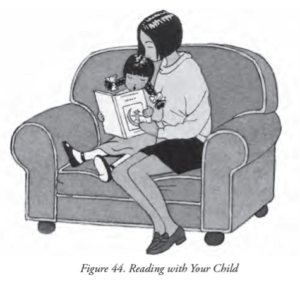Coronavirus Update for Parents: We’re with you.
Some helpful thoughts for parents of dyslexic boys and girls
First, please know that our thoughts and heartfelt warm wishes are with you. None of us can even imagine having been through such levels of uncertainty, changing day by day and even, at times, hour by hour. We know that the school closures caused by the coronavirus outbreak can be deeply disruptive for students and families – especially those with dyslexia.
In these unsettling and turbulent times, our worries range from ourselves and our family, friends and nation’s health and future and now, with school closing to the more mundane but deeply felt concerns of how am I going to support my child, especially if that boy or girl is dyslexic, so that she stays calm and continues learning..

©Sally Shaywitz, Overcoming Dyslexia, (Knopf, 2020)
As the grandmother of six, five of whom are of school-age, I have personally seen the effects of having children deprived of their regular school days and having to stay at home, with loving parents continually wondering what can I do to help my child continue to learn and not be hurt by these disruptive times. It is the unknown that breeds anxiety. I am currently fortunate to be staying with my son who is the father of a lovely six and one-half-year old daughter who is just being introduced to reading at her public school. This weekend we decided to read together. I was so happy to see how much early progress she has made in her decoding, her ability to sound out words. We came across several words like “hid” and “hide” and “can” and “cane,” “not” and “note,” and I began trying to teach her about the very useful silent e rule. Suddenly, it occurred to me, “this is silly, I have this rule and a very helpful list of 40 examples right in the 2nd edition of my book, Overcoming Dyslexia. I turned to pages 238-239 where right in front of me, I found The Secret of the Silent E Rule with extremely helpful and age-appropriate explanations and examples. My granddaughter and I had such a fun time learning and mastering this rule that afternoon. She loved it and exclaimed, “Now, I know it and can do it. I’m so happy!” I must admit, I was a bit surprised and delighted – both at my granddaughter’s grasp and love of learning and also at how helpful our book is for children learning to read. This is the real test and it passed with flying colors. That is my goal. I should note that in this very chapter (Chapter 18 Helping Your Child Become a Reader) there is a significant, over 15-page section on what to do at home with your child. Other particularly relevant chapters for parents to do with their child at home include: Chapter 17 Helping Your Child Break the Reading Code and Chapter 19 Helping Your Child Become a Skilled Reader – each chock full of examples of how to choose the right books for your child, names and links to online reading materials that will encourage his progress and how to best go about reading with your child so s/he enjoys it and learns to read better and better.
Also included are illustrated sections on developing an awareness of rhyme, separating words into syllables and syllables into phonemes and a very helpful section “The A to Z of Teaching Beginning Reading.” Included, too, are online resources, including games the beginning reader can play to help master and improve his/her reading. Also, there is a full chapter (Chapter 21) dedicated to Teaching the Dyslexic Child to Read, including each component of reading, vocabulary, comprehension and writing. Included here, too, are very helpful online programs teaching phonemic awareness and phonics and a section on moving from accuracy to fluency.
We also understand that many homes have dyslexic children who are in high school, who are beginning to or are in the midst of thinking about college, for example, as a dyslexic how to select a college, how to prepare for college and what to do once in college. For these students while they are at home they and you may find of particular interest three new chapters in this second edition: Chapter 26 (Succeeding in Post-Secondary Education), Chapter 27 (Selecting a College) and Chapter 28 (In College: Getting Started).
As concerned as I am and continue to be over the coronavirus, I take a small bit of solace and I hope you may too in knowing that there is some help on the way for families struggling with supporting their dyslexic child now at home 24.7. That is, one week from today, Tuesday, March 24 is the official release day for the new and revised edition of Overcoming Dyslexia by myself and my son, Jonathan Shaywitz, M.D., a psychiatrist with a particular interest in and expertise in anxiety disorders and ADHD. Keep in mind, there is a complete audio version of this new edition read by me for those who prefer to listen rather than read.
The book is available on Amazon for pre-order now.
Please stay safe and well.
